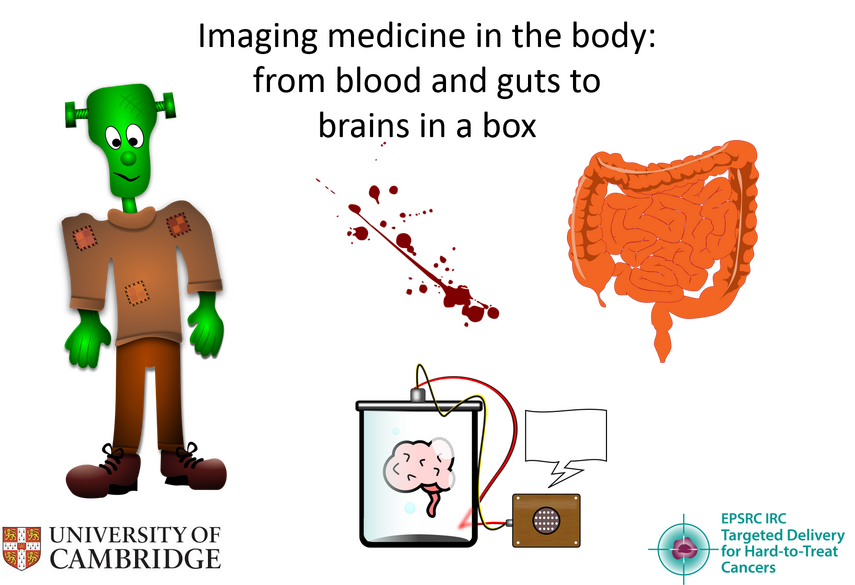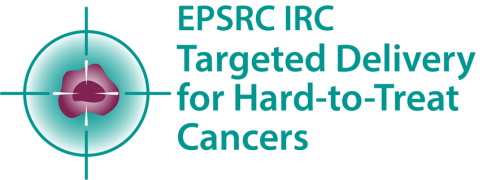
Addressing the challenges involved in developing targeted delivery for hard-to-treat cancers requires research skills and insights from a range of specialisms. IRC Research Associate Dr Niamh Fox, who works as part of the Fluids in Advanced Manufacturing Group at the Institute for Manufacturing at the University of Cambridge, reflects on the benefits of multidisciplinary teams and the importance of outreach for the future of diversity in science.
Joining the IRC programme three years ago was a natural step for me – and a welcome one. I am a chemistry graduate and my previous role involved studying shear forces in manufacturing processes and how they can be used to drive chemical change. The IRC project took this knowledge and applied it to something new – how processes and changes that might occur in chemistry can affect the drug delivering abilities of the three types of devices being designed by the IRC team. I've never worked with drug delivery or research with any kind of biological element to it, so this presented an interesting change in terms of the science – and the chance to contribute to something that might make someone's life a little bit more bearable, particularly in a very rough situation, is a motivating factor.
While the research itself is compelling, the ability to communicate the science to the wider world is, I believe, essential. If we can’t communicate to the public, it’s almost as if the work has never been done. I think the onus is on us, the scientists, to explain in an accessible way what we're doing and why it's beneficial. Dr Niamh Fox, IRC Research Associate
The IRC programme comprises clinicians, chemists and engineers working together in the development of new technologies to better combat three hard-to-treat cancers – mesothelioma, pancreatic cancer and glioblastoma. I love interacting with the range of people on the team and the cross-disciplinary element is incredibly valuable to advancing our mission, because the mix of specialisms brings different perspectives needed to address such a multi-faceted problem.
Traditionally, scientific disciplines have often operated in silos but the IRC breaks this model to enable the physicians to work alongside the chemists and engineers – it’s a holistic approach that helps to streamline the journey from lab to clinic. It’s all very well if the engineering of a drug delivery device is working well but if it doesn’t do what is needed to the biology, the solution is stymied. Similarly, a single device perfected in the lab is not much use unless it can be manufactured at scale to meet the needs of potentially hundreds of patients. Acknowledging these challenges at an early stage can avoid obstacles further down the line. IRC researchers are supported by the manufacturing team to better understand the processes involved and study how these might affect the behaviour and efficacy of the devices during the design phase.
In short, we are trying to make sure that drug delivery isn't affected by processes, either in the manufacture or use of the device, and this manifests differently across the three technologies used. With the implantable ion pumps we are looking at how and where the drug is delivered and how this changes according to design modifications. With the high-capacity nanoparticular delivery vehicles, we're studying reactions under shear forces, similar to those experienced in the body, to see if the nanoparticles change their shape and function. Finally, with the hydrogels we are exploring what happens in their initial delivery – are they damaged, for example, by having to be pushed out of a needle?
There’s no doubt that the IRC is an ambitious project but, considering the challenges of Covid and reduced access to labs, phenomenal progress has been made. We are only half-way through the six-year programme, and there is already talk of funding for clinical trials.
While the research itself is compelling, the ability to communicate the science to the wider world is, I believe, essential. If we can’t communicate to the public, it’s almost as if the work has never been done. I think the onus is on us, the scientists, to explain in an accessible way what we're doing and why it's beneficial.
Telling this story is key to capture the imagination of younger people who are the potential scientists of the future. It's incredibly important to show that anyone can be a scientist or an engineer. If we're not encouraging all children at a really young age, and they choose not to study science, it's not surprising to find a lack of diversity in the profession. It can be so beneficial to have a varied and diverse input from a whole range of people with different points of views that can spark new ideas and perspectives to overcoming research challenges. I really enjoy talking to young people about what I do, showing them that anyone can be involved in a career in science and enjoy it. I hope to continue to work as a researcher in academia, figuring out the puzzles, putting the pieces of the puzzle together and finding out not just why something happens, but what we can do with that information – and how it can make a difference. I also hope to continue spreading the word of science and helping to attract the young people of today to become the multidisciplinary scientific teams of tomorrow.
• Watch Dr Niamh Fox short Cambridge Festival video ‘Imaging medicine in the body: from blood and guts to brains in a box’ on the IRC YouTube channel here and the Cambridge Festival video ‘Seeing is believing: what can microscopes tell us about drug delivery?’ here.



